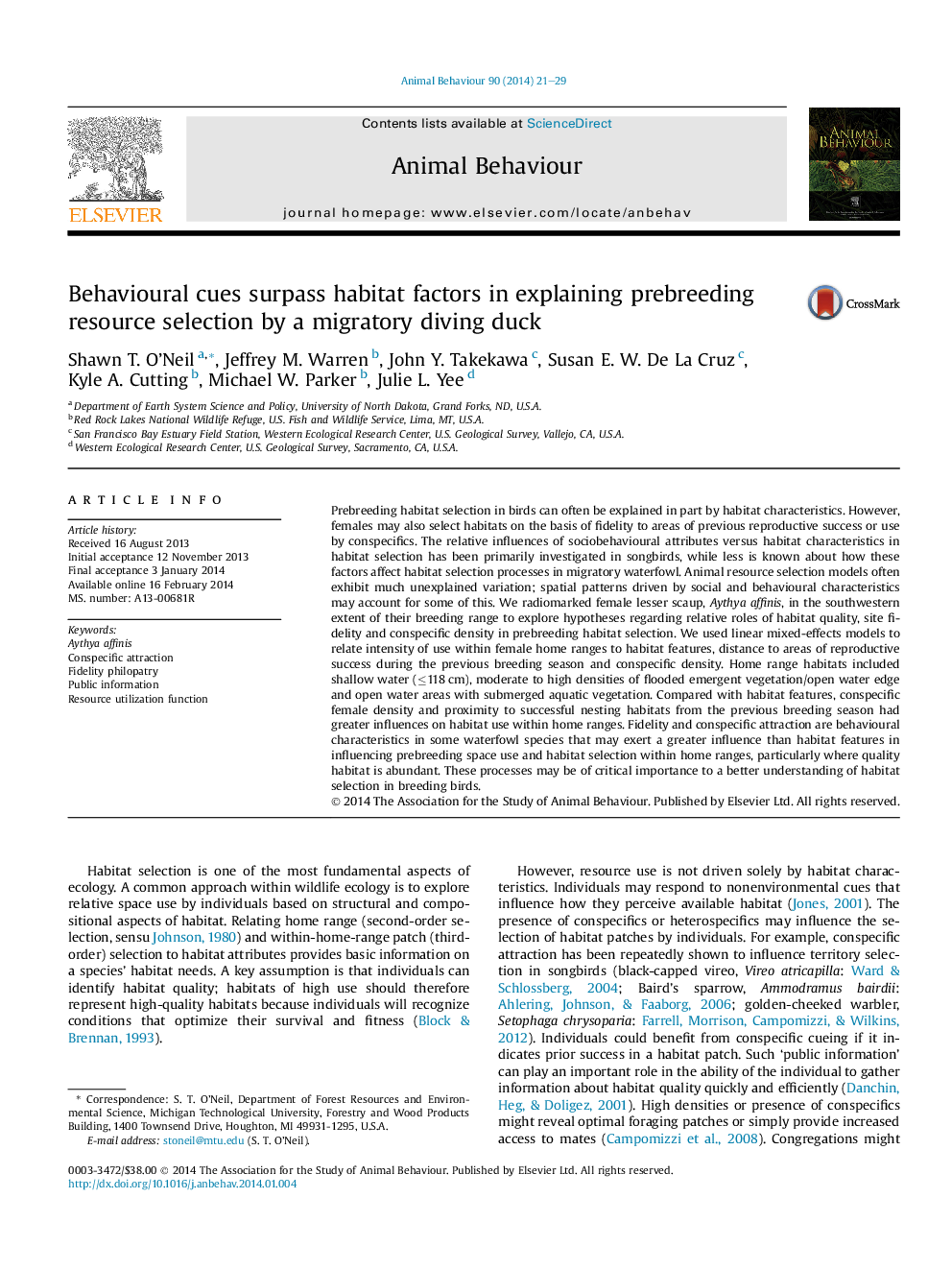| کد مقاله | کد نشریه | سال انتشار | مقاله انگلیسی | نسخه تمام متن |
|---|---|---|---|---|
| 2416373 | 1552238 | 2014 | 9 صفحه PDF | دانلود رایگان |
• We modelled prebreeding habitat selection of 35 Aythya affinis females.
• Mixed-effects models indicated strong influences of behavioural attributes.
• Distance to previously successful nest areas and conspecifics influenced space use.
• Habitat characteristics explained less variation than did behavioural attributes.
• Behavioural characteristics in part drive patterns of space use in breeding ducks.
Prebreeding habitat selection in birds can often be explained in part by habitat characteristics. However, females may also select habitats on the basis of fidelity to areas of previous reproductive success or use by conspecifics. The relative influences of sociobehavioural attributes versus habitat characteristics in habitat selection has been primarily investigated in songbirds, while less is known about how these factors affect habitat selection processes in migratory waterfowl. Animal resource selection models often exhibit much unexplained variation; spatial patterns driven by social and behavioural characteristics may account for some of this. We radiomarked female lesser scaup, Aythya affinis, in the southwestern extent of their breeding range to explore hypotheses regarding relative roles of habitat quality, site fidelity and conspecific density in prebreeding habitat selection. We used linear mixed-effects models to relate intensity of use within female home ranges to habitat features, distance to areas of reproductive success during the previous breeding season and conspecific density. Home range habitats included shallow water (≤118 cm), moderate to high densities of flooded emergent vegetation/open water edge and open water areas with submerged aquatic vegetation. Compared with habitat features, conspecific female density and proximity to successful nesting habitats from the previous breeding season had greater influences on habitat use within home ranges. Fidelity and conspecific attraction are behavioural characteristics in some waterfowl species that may exert a greater influence than habitat features in influencing prebreeding space use and habitat selection within home ranges, particularly where quality habitat is abundant. These processes may be of critical importance to a better understanding of habitat selection in breeding birds.
Journal: Animal Behaviour - Volume 90, April 2014, Pages 21–29
